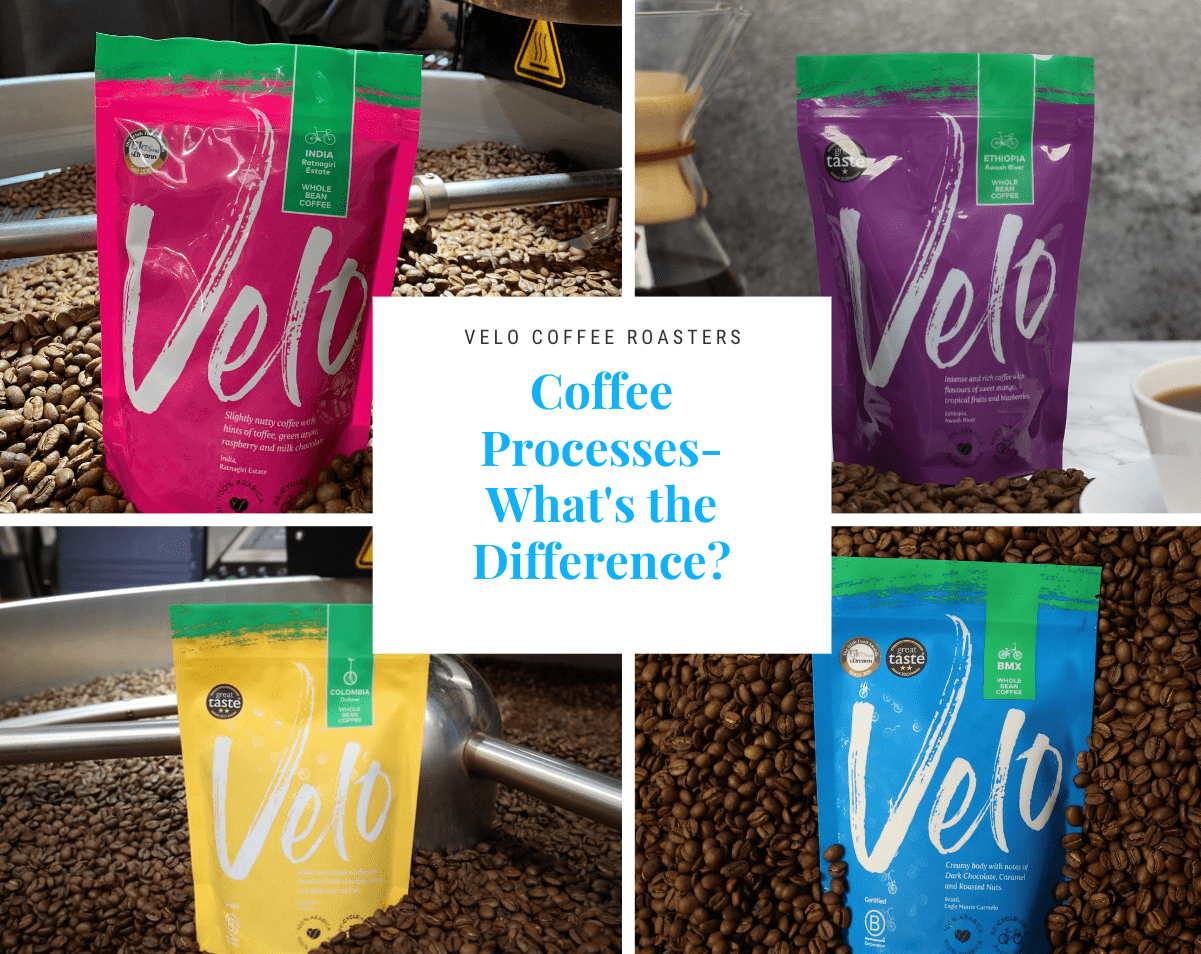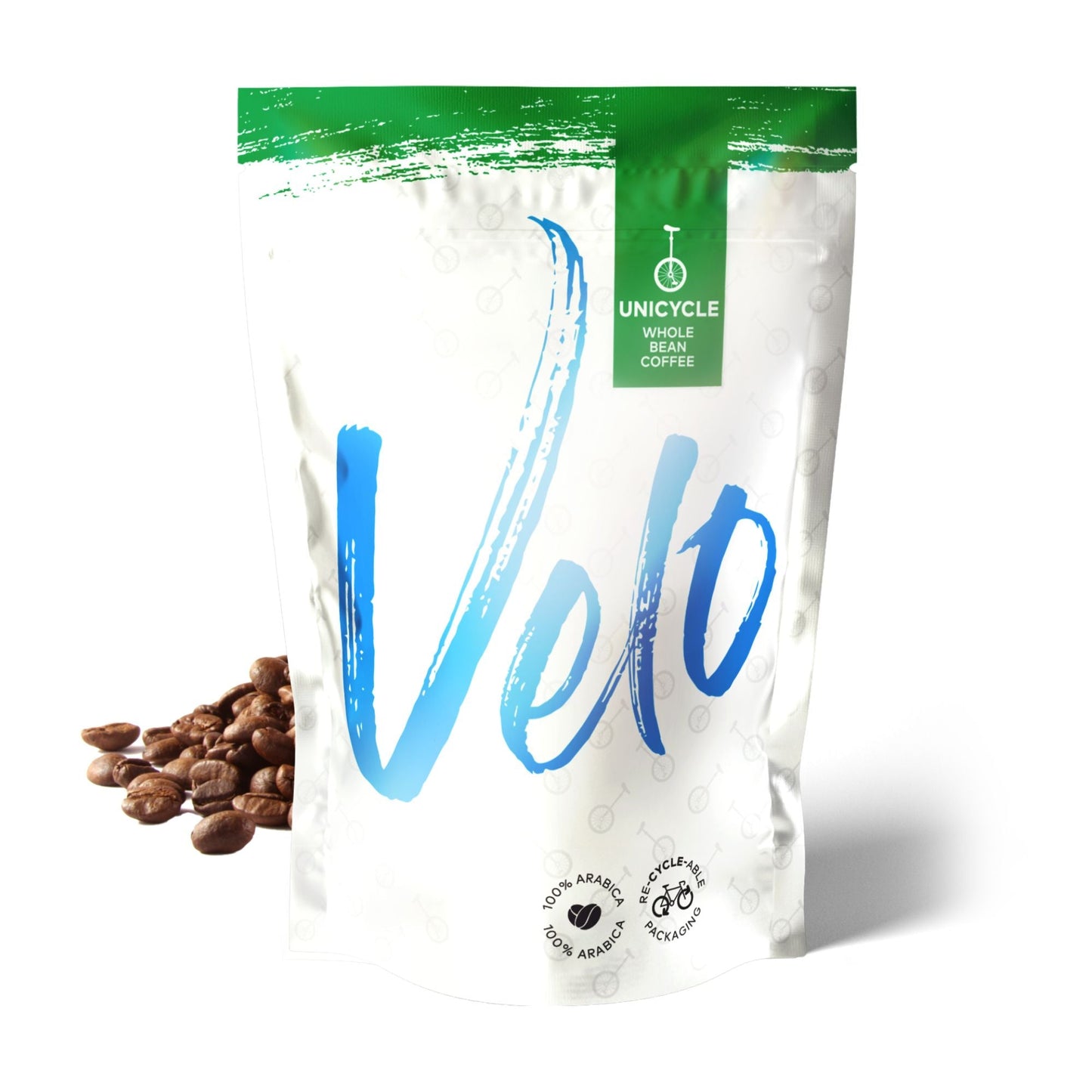
Natural, washed, wet-hulled – what?!
Your Velo coffee just arrived, and with high levels of excitement, you open the box and take your coffee bag out! You look at your bag of coffee and see words like “natural, washed, wet-hulled, extended fermentation”, and you can’t help but wonder what they mean.
Well, wonder no more! We are going to tell you all about the different types of processes that coffee beans go through. The way the coffee beans are processed can impact the flavour of the coffee, so you may have a preference of process without even knowing.
Coffee processing is broken down into four different methods: fruit dried, mucilage dried, parchment dried, and seed dried. These methods are then broken down into what we are going to talk about today!
Natural Coffees
The natural, or dry, process of coffee is a basic approach originally from Ethiopia.
This process requires less investment, but certain climate conditions are necessary to dry the beans properly. The natural process can create some of the most flavourful coffees!
The natural process is where the coffee cherries (yes, coffee beans come from a fruit) are picked when ripe, laid out to dry on massive patios or raised beds for weeks at a time and turned periodically to avoid spoiling. The coffee is then dried to a standard of 10% - 12% moisture.
Our Brazil Eagle Monte Carmelo is a favourite among our customers, and one of our natural processed coffees. The region this coffee comes from has a very dry climate, so the coffee is not impacted by humidity.
Washed Coffees
Washed coffees focus solely on the bean and really allow you to taste what’s on the inside. The washed process depends on the bean’s ability to absorb natural sugars and nutrients before harvest. Here, the country of origin plays a prominent role in the overall flavour.
Soil, weather, washing, and drying are all key elements of the washed coffee process. Washed coffees highlight the true character of a single origin bean, which is why so many specialty coffees are washed!
One of our most popular coffees is a washed Catuai from Ratnagiri Estate in India! This delicious coffee is slightly nutty with flavours of milk chocolate and green apple - sounds delicious! The farm where this coffee comes from has been operated by the same family for generations, giving them plenty of time to perfect the washed process and begin to experiment!
Extended Fermentation
The producer deliberately prolongs the fermentation time to add more elaborate flavours to the coffee. There are two ways to extend the fermentation. Our Mexico Innovation Extended Fermentation coffee is an experimental extended fermentation process where the producers, the Zili and Sameire families, took fresh coffee cherries, pulped them carefully, and added a yeast starter culture to the fermentation tank. They allowed the fermentation to extend about two to three times the normal fermentation while monitoring a variety of indicators before finally washing and drying the coffee.
They found that the process increased the cup score almost 3 points on the SCA scale and the cup profile tasted a bit like a coffee from East Africa instead of its native region of Huatusco. It is a truly one of a kind of coffee that we are delighted to share!
Anaerobic
Anaerobic means “oxygen deprived.” The intact coffee cherries are placed in large barrels with water and sealed from oxygen for 48 to 72 hours. They ferment without oxygen, which imparts a completely different flavour from natural or honey processing (don’t worry - we won’t get all ‘sciencey’ on you)!

Coffee beans that are being processed with the anaerobic method are stored in closed bags or tanks with carbon dioxide traps and covered with water. This delicious coffee, Buena Vista Nicaragua is an anaerobic processed coffee!
Now what..?
Well, that was certainly a lot of information! Hopefully we were able to teach you something new today - other than the fact you want to go make a cup of coffee NOW!






